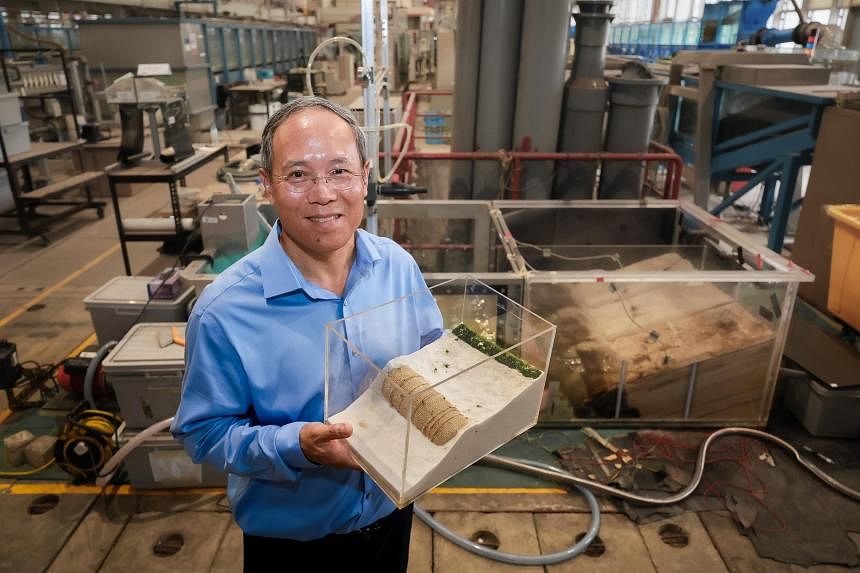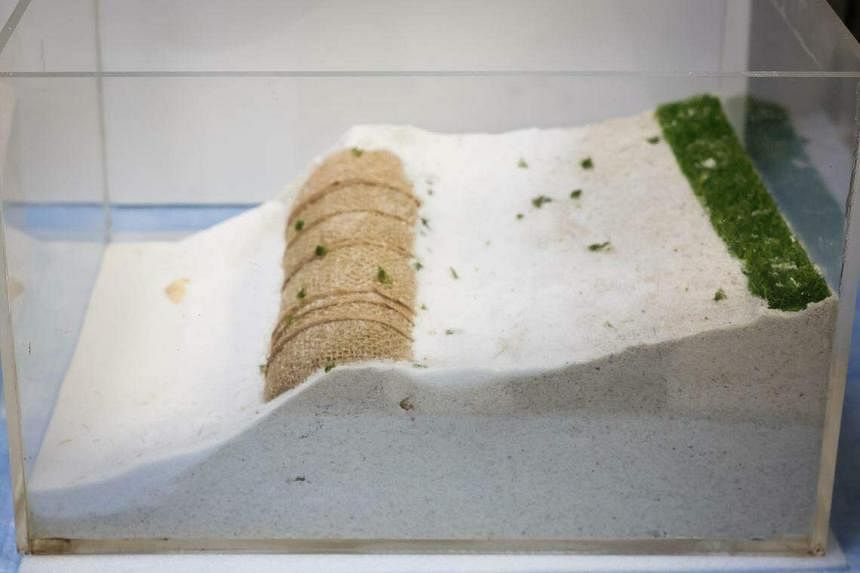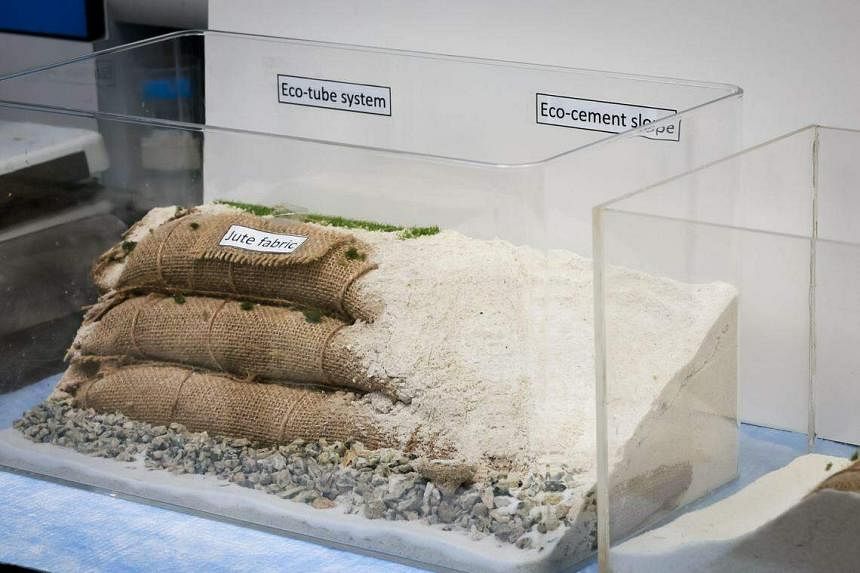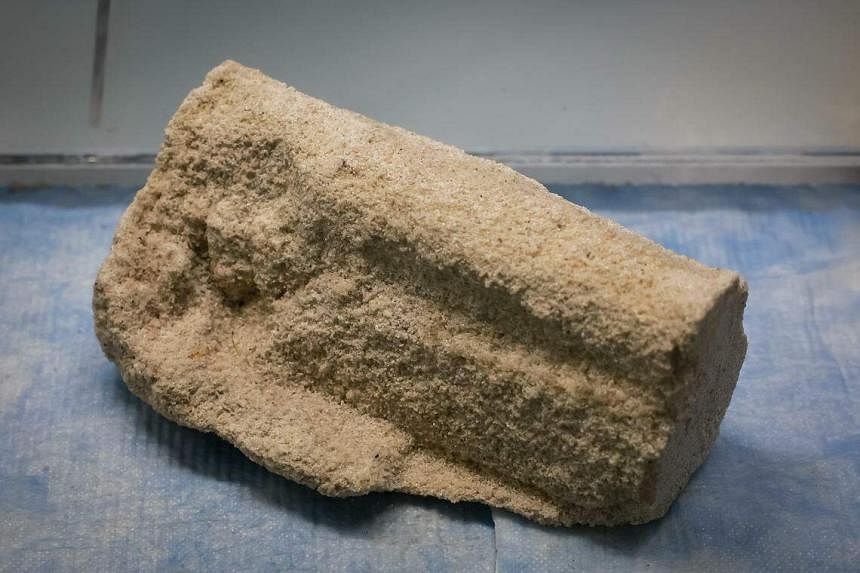
SINGAPORE – Instead of lining Singapore’s coasts with concrete barriers to protect the country from rising sea levels, a geo-engineering professor aspires to reshape and strengthen the flat beaches and shorelines into natural “sea walls”.
This ambitious vision by Nanyang Technological University’s (NTU) Professor Chu Jian involves lining the shoreline with tube-like beams made of natural materials such as plant fibres, sand and soya bean powder.
These bundles will shield the beach from strong waves. Over time, sand and soil can slowly accumulate and raise the shores, turning the beach front into a natural sea wall of sorts, to catch up with higher sea levels.
This proposal by Prof Chu is among the second series of research projects selected by the Coastal Protection and Flood Resilience Institute (CFI) Singapore to receive support and funding from the Government.
The new projects were announced by Minister for Sustainability and the Environment Grace Fu on June 20 at the inaugural Coastal and Flood Resilience Leaders Summit.
The summit is part of the Singapore International Water Week conference that will be held until June 22 at the Marina Bay Sands Expo and Convention Centre.
The funding for the research projects under CFI comes from national water agency PUB’s $125 million Coastal Protection and Flood Management Research Programme.
Prof Chu, the chair of the NTU School of Civil and Environmental Engineering, said the nature-based beams are more suited for coastlines with fragile ecosystems, such as mangroves, seagrass and intertidal habitats.
Hard, concrete sea walls and revetments can cause coastal habitats to be lost and block nesting creatures, like turtles, from reaching parts of the beach, he added.
Prof Chu said his solution aims to increase the height of sandy beaches and soil and in turn promote the growth of more coastal trees and mangroves. Their root structures can soften the impact of waves and trap sediment from tides to help the coastal edges keep pace with sea-level rise.
“Once the barrier (beams) is there, the waves will bring in soil to the back of the barrier and accumulate there to form an elevated land,” said Prof Chu.

Finding novel engineering solutions and harnessing nature as a weapon to defend the coast are key focus areas for the CFI, which now has 17 research projects, including the eight new ones announced on June 20, under its wing. Each project will take about four years to complete.
Other key areas of the CFI – formed in late 2023 and hosted at the National University of Singapore (NUS) – include building coastal science knowledge and improving ways to monitor and predict floods.
Singapore needs a range of coastal protection solutions as its mean sea level is expected to rise by up to 1.15m by 2100. Extreme weather, which could bring exceptionally high tides and storm surges, could raise sea levels by up to 5m.

With the help of miniature wave simulations in his lab, Prof Chu calculated that one layer of beams along the edge of a coast can eventually raise the shoreline by 1m.
Each beam resembles a sandbag, but its outer covering is made of thick plant fibre. The beam is filled with a mixture of sand, soya bean powder and calcium ions that have been cemented together to form an erosion-resistant “rock”. Prof Chu already has a prototype of this man-made rock.

Over a few years, as seawater seeps into the beams, the natural fibres will decompose. But ions from the water will react with the man-made rock and make it sturdier.
Prof Chu plans to test some prototype beams at the shoreline here within two years.
In another new project under the CFI, Associate Professor Qian Xudong from the NUS Department of Civil and Environmental Engineering will develop floating breakwaters that can also produce green energy.
Floating breakwaters deployed in deeper waters farther from the coast can absorb the power of extreme waves and surges so that they are gentler when they reach the shore. Prof Qian is designing a breakwater that can be covered with solar panels and hold equipment to harness wave and tidal power.
“The renewable energy produced could be used to power offshore aquaculture farms and also protect those farms against harsh sea conditions,” said Prof Qian.
On June 20, Ms Fu also announced that the Singapore Water Association will launch a new chapter on coastal protection.
“We are building capacity and capability in our industry, engineering services, in particular, to deliver future coastal protection measures.”
The new chapter’s committee chair, Mr James Lam, who is the executive director of coastal engineering at Surbana Jurong, noted that many water and engineering firms still need to build capabilities in coastal protection and develop talent.
“A lot of companies may not understand what is involved in coastal adaptation... When it comes to coastal protection, it is not just about hard engineering. We have to work with other disciplines, ecologists to work out the nature-based solutions. We have to involve nurseries and environmental consultants and nature groups,” said Mr Lam.
https://news.google.com/rss/articles/CBMibWh0dHBzOi8vd3d3LnN0cmFpdHN0aW1lcy5jb20vc2luZ2Fwb3JlL3MtcG9yZS1mdW5kcy1uZXctcmQtcHJvamVjdHMtdW5kZXItcHViLXByb2dyYW1tZS10by1jb21iYXQtcmlzaW5nLXNlYXPSAQA?oc=5
2024-06-20 11:45:00Z
CBMibWh0dHBzOi8vd3d3LnN0cmFpdHN0aW1lcy5jb20vc2luZ2Fwb3JlL3MtcG9yZS1mdW5kcy1uZXctcmQtcHJvamVjdHMtdW5kZXItcHViLXByb2dyYW1tZS10by1jb21iYXQtcmlzaW5nLXNlYXPSAQA
Tidak ada komentar:
Posting Komentar